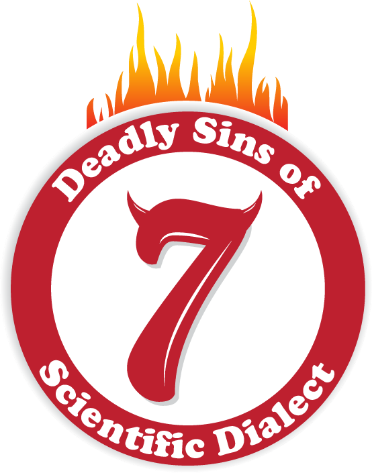Seven Deadly Sins Part 5

This series was written by Writing Tip Wednesday reader Rick Hull. Rick has been a health communications specialist with the National Center for Chronic Disease Prevention and Health Promotion’s (NCCDPHP’s) Office of the Director for 36 years, many of them as a writer-editor. He is NCCDPHP’s clearance coordinator and branding ambassador, CDC’s logo-licensing and co-branding coordinator, and a reviewer in CDC’s system logos clearance.
His favorite quote is “Great ideas are hogwash. Style and structure are the essence of great writing.” —Vladimir Nabokov, Lectures on Literature
In elementary school, you learned that verbs are action words. Why, then, do we rely so often on those inactive words known as linking verbs (verbs that connect the subject to an identifying or modifying complement)? This is particularly true for forms of the verb “to be.” I think we lean on linking verbs because clear thinking is hard work. Linking verbs buy us time—they let us approach a thought indirectly, rather than articulate it directly. Weak verbs cloak our thoughts in abstraction, safe from precision’s spotlight.
Stylistically, weak verbs lead to wordiness—particularly, to an overabundance of prepositions. They also lead to a type of abstraction known as a “smothered verb,” a once-lively verb turned to stone (that is, to a noun, typically ending in “ion”).
Example:
There is a need for investigation of these associations in additional populations for further elucidation.
Revision:
Researchers should investigate these associations in other populations.
Example:
The possibility that unrecognized risk factors for preterm delivery may exist to which this group may be differentially exposed is a consideration which requires thorough exploration.
Revision:
This group could be differentially exposed to unrecognized risk factors for preterm delivery.
Example:
The identification and classification of the various histologic types of lymphomas are vital steps toward the introduction of new therapies and the reduction of mortality.
Revision:
Identifying and classifying the histologic types of lymphomas could lead to new therapies and reduced mortality.